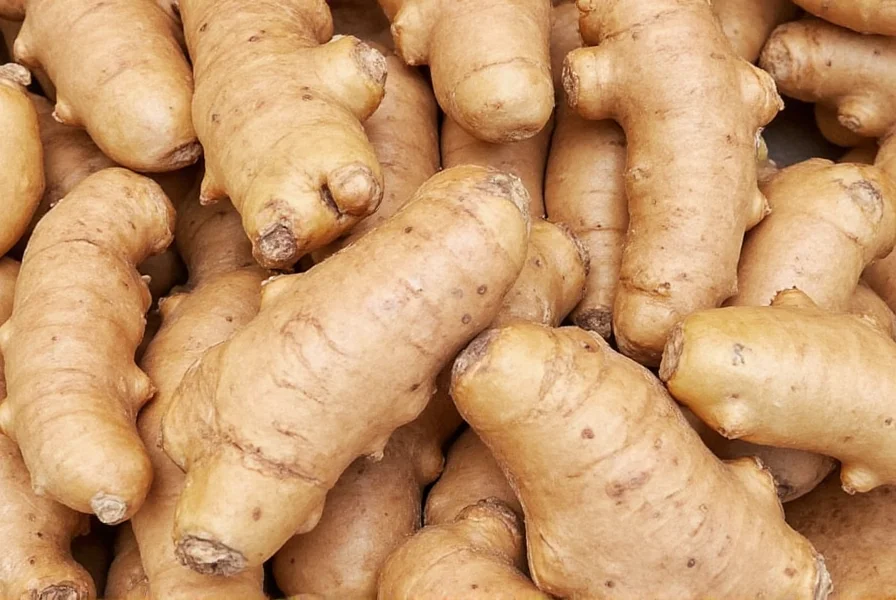Proper ginger preparation unlocks its full flavor potential while minimizing waste. This versatile root requires specific handling techniques that differ based on whether you're making tea, stir-fries, or medicinal preparations. Understanding these methods ensures you maximize both flavor and nutritional benefits in your dishes.
Selecting Quality Ginger Root
Start with fresh, high-quality ginger. Look for firm rhizomes with smooth, taut skin that feels heavy for its size. Avoid pieces with wrinkles, soft spots, or visible mold. The best ginger has a spicy, citrusy aroma when scratched. Young ginger has thinner skin and is more tender, while mature ginger has a stronger flavor and thicker skin that requires more thorough peeling.

Peeling Ginger Root Without Waste
The spoon method preserves maximum ginger flesh. Hold a teaspoon firmly and scrape along the ginger's curves. The spoon's edge easily removes the thin skin while following the natural contours, wasting less than 30% less ginger compared to knife peeling. For young ginger with very thin skin, washing thoroughly may suffice before use.
When using a vegetable peeler, work with the ginger's shape rather than against it. Hold the ginger firmly and peel in short, downward strokes following the natural curves. This technique prevents gouging into the valuable flesh beneath the skin.
Cutting and Preparing Ginger
Different culinary applications require specific ginger preparations:
| Preparation Method | Best For | Technique Tips |
|---|---|---|
| Thin Slices | Tea, braises, pickling | Cut crosswise into 1/8-inch rounds using a sharp knife |
| Julienne Strips | Stir-fries, salads | Cut slices into matchstick pieces about 2 inches long |
| Minced | Sauces, marinades, dressings | Finely chop after slicing to ensure even distribution |
| Grated | Baking, smooth sauces, medicinal uses | Use fine side of box grater; freeze ginger first for easier grating |
Specialized Ginger Preparation Techniques
For beverages: To make ginger tea, slice ginger thinly and crush slightly with the side of your knife to release maximum flavor. Simmer in water for 10-15 minutes for optimal extraction of gingerols.
For cooking: When adding to stir-fries, cut ginger into uniform pieces to ensure even cooking. For curry pastes, pound ginger with a mortar and pestle for the most authentic texture and flavor release.
For medicinal uses: Freshly grated ginger provides the highest concentration of active compounds. For digestive relief, mix one teaspoon of freshly grated ginger with honey and lemon.
Proper Ginger Storage Methods
Store unpeeled ginger root in the refrigerator's crisper drawer for up to three weeks. For longer storage, place in an airtight container with a paper towel to absorb moisture. Peeled ginger can be stored in vodka or sherry in the refrigerator for up to six months, which also makes grating easier.
Freezing whole ginger root is another excellent option. Simply place unpeeled ginger in a freezer bag. When needed, grate frozen ginger directly into dishes without thawing. This method preserves flavor compounds better than refrigeration for long-term storage.
Common Ginger Preparation Mistakes
Many home cooks waste valuable ginger by peeling too deeply. The edible portion extends nearly to the skin, so gentle peeling preserves more flavor. Another common error is using dried or powdered ginger as a direct substitute for fresh without adjusting quantities—typically use 1/4 teaspoon ground ginger for each tablespoon of fresh.
Overcooking ginger diminishes its bright flavor. Add it toward the end of cooking for maximum impact in dishes. When grating, pressing too hard creates bitter pulp—apply gentle pressure for the best results.
Ginger Measurement Conversions
Understanding fresh ginger measurements ensures recipe accuracy:
- 1 inch piece of ginger (about 1.5 inches in diameter) = approximately 1 tablespoon grated = 4 teaspoons
- 1 ounce fresh ginger = about 3 tablespoons grated
- 1 tablespoon fresh grated ginger = 1/8 teaspoon ground ginger (for flavor comparison only)
Frequently Asked Questions
Can you eat ginger skin?
Yes, young ginger skin is edible if thoroughly washed. However, mature ginger skin becomes tough and fibrous, so peeling is recommended for most culinary applications to ensure proper texture in finished dishes.
How do you prevent ginger from drying out after cutting?
Place cut ginger in an airtight container with a slightly damp paper towel in the refrigerator. For longer storage, submerge in sherry or vodka, which preserves flavor while preventing mold growth for several months.
What's the best way to grate ginger without a grater?
Use a vegetable peeler to create thin strips, then finely mince with a sharp knife. Alternatively, freeze the ginger first, then use the edge of a spoon to scrape off fine particles that function similarly to grated ginger in recipes.
How long does prepared ginger last in the refrigerator?
Properly stored in an airtight container with a paper towel to absorb moisture, grated or sliced ginger remains fresh for 5-7 days. For extended freshness, store in a small amount of neutral oil or sherry, which can preserve quality for up to three weeks.










 浙公网安备
33010002000092号
浙公网安备
33010002000092号 浙B2-20120091-4
浙B2-20120091-4